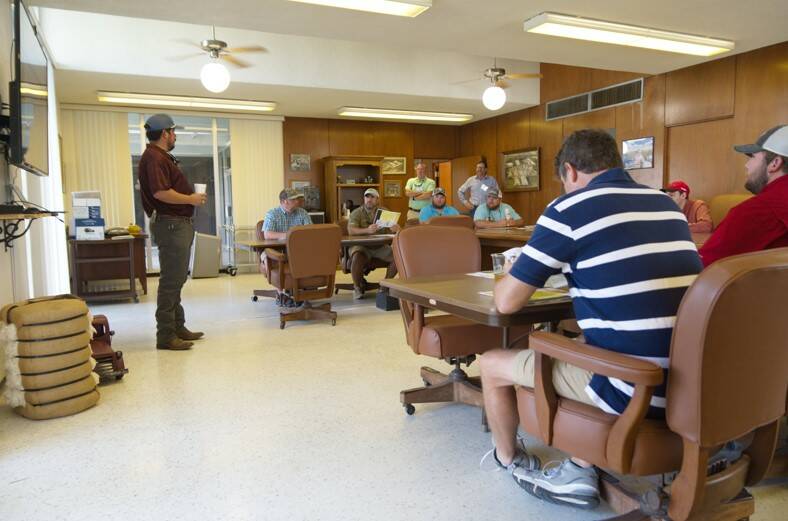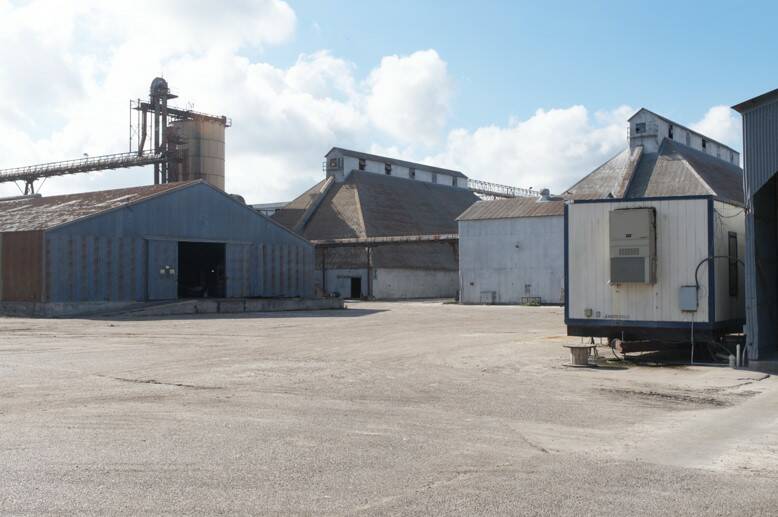HARLINGEN — Cotton is more than just the shirt on your back.
The products from the boll and, especially, the seeds which are processed after the cotton is picked number in the hundreds if not thousands.
From the seed kernel one derives fertilizers, livestock feed, fish bait, refined oil used in snacks, margarine, mayonnaise and salad dressing, and soap and plastics.
From the seed hulls come more livestock feed, synthetic rubber and plastics, and from the short but fine lint which is scraped off the seeds comes plastics, hair care products and cosmetics, toothpaste, automotive upholstery, cotton swabs and fine writing paper.
The Valley Co-op Oil Mill in Harlingen at N. Expressway 77 and Wilson Road is one of just eight remaining cottonseed processing facilities in the nation. Established in 1948, the mill brings in around 200,000 tons of cottonseed annually from Texas growers.
On Thursday, the mill hosted the National Cotton Council of America’s Producer Information Exchange program, which brought 18 Mid-South and Southeast cotton producers to see how things are done in Texas on a week-long, whirlwind tour of agriculture facilities, farms, ports and more.
Hebbronville native Aaron Pena is sales manager for the co-op, where he has worked since 2010.
“We’ve been crushing seed and selling seed since 1948,” Pena said. “The economic value of cotton has definitely increased due to the price of cottonseed. I mean, the values that they are today versus even five years ago are astronomical.”
“When I started here, I think we were paying about $150 per ton for seed coming in, and right now we’re paying $400 delivered in,” he added. “Luckily, the byproducts and everything have held true, and we’re able to still turn a profit, but it’s definitely becoming a challenge.”
A bale of cotton produces about as much seed as it does fiber, usually around 600 pounds per bale.

The first step is to de-lint the seed and capture the cotton fibers, which are much shorter than regular cotton fibers used for clothing, and bind it into bales mostly for the cellulose market, Pena said.
“From there, we’ll be dealing with our black seed, and once its de-linted, we’ll crack that, that hull will be a roughage for cattle,” he said. “And then once I’m down to the meats, that’s where the magic happens.”
“When I get the meats is where I’ll run it through our solvent extraction with hexane, and we will extract out the oil and that normally goes into industrial use for fried foods and stuff like that,” Pena added. “It’s on par with peanut oil, but in my opinion, better. But I’m biased, naturally. What’s left over from the meat is a 41-percent protein cattle feed.”
Dennis Easley is plant manager at the mill and said last year the mill processed 190,000 tons of seed, enough for about 9,000 truckloads.
“We have got upwards in a big year, 12,000, 13,000 trucks in here in about a 60- to 75-day period on this little road,” he said. “This plant was built in 1948, and the closest asphalt road was probably three miles (away), we were just out in the middle of nowhere. …”
“I’m the seventh generation to be doing this,” Easley said. “When my grandfather did this back in 1947, there were 800 oil mills in the United States. In my father’s time in ‘59 there were still 150. By ‘79 when I got into the industry, there were 75. Right now, there are just eight of us left in the United States.”
The National Cotton Council’s Producer Information Exchange program was launched in 1989 and will, after this year’s two tours finish, have exposed more than 1,200 cotton producers to innovative practices in Cotton Belt regions different than their own.
“It’s interesting to see other areas, and part of this exchange is where the growers can educate themselves and help each other, and maybe pick up one or two things that can help them at their farm,” said Bradshaw Lewis, a representative of the Cotton Council of America from Arkansas.
“Hands-on is always the best, and then building relationships with one another that you can keep for a lifetime,” he added.





